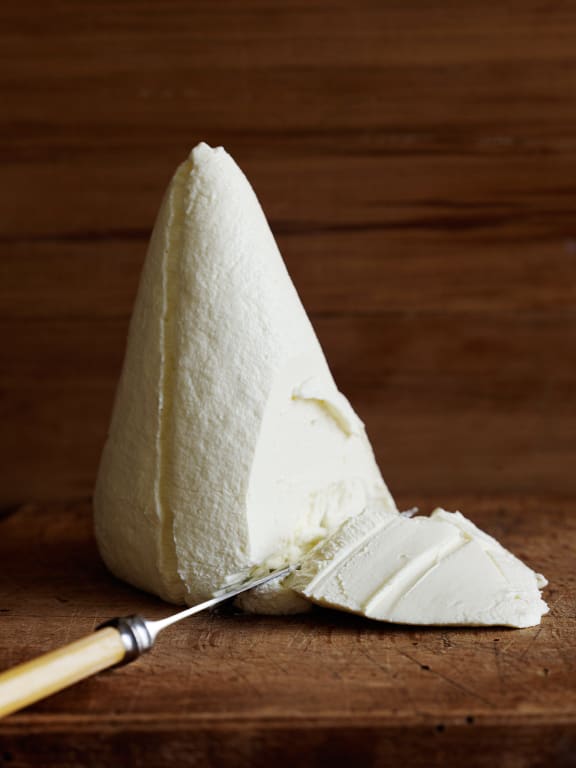How to Make Labna

Labna Photo: Julie Biuso
How to Make Labna
Labna or labneh, also known as yoghurt ‘cheese’, is made by straining full-fat yoghurt (do not use reduced-fat yoghurt). The taste is distinctly lemony, and the texture creamy, but not at all rich. It’s low in calories, too.
4½ cups unsweetened natural full-fat yoghurt
1 tsp salt
1 Rinse a clean piece of muslin or cheesecloth to remove any detergent, then put it in a saucepan of water and boil hard for 5 minutes. Remove muslin from water with tongs, cool, press out excess water, then line into a colander. Set the colander over a large bowl. This is a fussy way to go about it, and many people just use any old thing to strain the yoghurt, but there you are, I’m fussy!
2 Beat yoghurt and salt together, then pour into the muslin-lined colander, draping any hanging muslin over the surface of the yoghurt to avoid liquid dripping from it as the muslin becomes saturated. Place in the refrigerator and leave for up to 72 hours, pouring off liquid as it accumulates (the whey can be used in scones or baking, etc.). After 12–24 hours, the labna should be like a thick creamy Greek-style yoghurt. After 72 hours it should be firm enough to shape into small balls or ovals.
3 When ready to serve, peel off the muslin and shape the yoghurt into smallish ovals with two spoons or lightly oiled hands. Treat it very gently. Roll in freshly ground spices, chopped nuts or chopped herbs and serve with crisp bread or crostini. The balls are also good served with fresh fruit and syrups or honey. Alternatively, put the rolled labna balls on a tray and refrigerate them for a further 24 hours to firm them further, then layer in a sterile jar with extra virgin olive oil. If preserving this way, cover with a lid, store in a cool place and use within one month. The labna balls can be served with bread and olives and fresh herbs removed from their stems – choose from mint, coriander, parsley, tarragon, chives, thyme and dill.